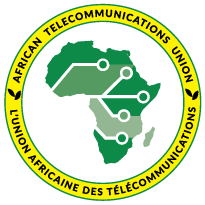Given the strain on the internet requirements of residential areas occasioned by the COVID-19 pandemic and particularly the ‘stay at home’ directive issued by many governments, ATU proposed a plan to empower Member States with options on how the radio spectrum bandwidth can be exceptionally released to (and used by) Member States’ operators. The proposal is aimed at enhancing mobile broadband connectivity during the crisis in order to meet the increased demand while also rolling out to the rural areas. It is as a result of this process that a draft paper on “Options on special spectrum release in Fight against COVID-19 and the Mitigation of its Impact,” was developed.
The focus of the paper which was discussed and approved on 28th May 2020 by a group of 127 participants led by Mr Baxton Sirewu from Zimbabwe, was hinged on the need for empowering and approving the radio spectrum bandwidth. The approved draft paper included seven options: the release of an additional spectrum for use by existing operators, for a limited period of time, ideally covering the COVID-19 crisis period; releasing (additional) spectrum for use by the existing operators for a limited period of time, at a nominal fee; fast-tracking regulatory approvals for an emerging connectivity systems or conventional systems to expeditiously operate in a country; necessitating authorization of Soft re-farming, National Roaming, Infrastructure Sharing and Spectrum Sharing which involves flexibility in the use of deployed infrastructure and the spectrum already licensed to operators; authorization for deployment of Television White Space (TVWS) solutions that opportunistically utilizes the unused spectrum in the UHF terrestrial television broadcasting spectrum within the range 470 – 694MHz; administrations accelerating the activation of Wi-Fi usage on a licence-exempt basis of bands 5925-6425 MHz and 5725-5850 MHz and Channels 1 to 4 of the WiGig (Gigabit Wi-Fi) bands in the 60GHz band, or parts thereof and Option 7 being the call for countries to embark on the implementation of the medium and long term action items contained in the “Action Plan on ICT Sector COVID 19 Response” as early as now, by among other things, implementing the outcomes of previous WRCs.
With these options, the overall objective of the proposal was set as; to ensure that the digital divide forms of ICT applications’ and coverage are addressed expeditiously and sustainably.It was also agreed that with some of the options being complimentary, several pertinent factors have to be considered in order to guarantee smooth roll out of the recommendations. Stakeholders are considered as an essential factor in ensuring that action is undertaken thus the need to ensure they are involved.


